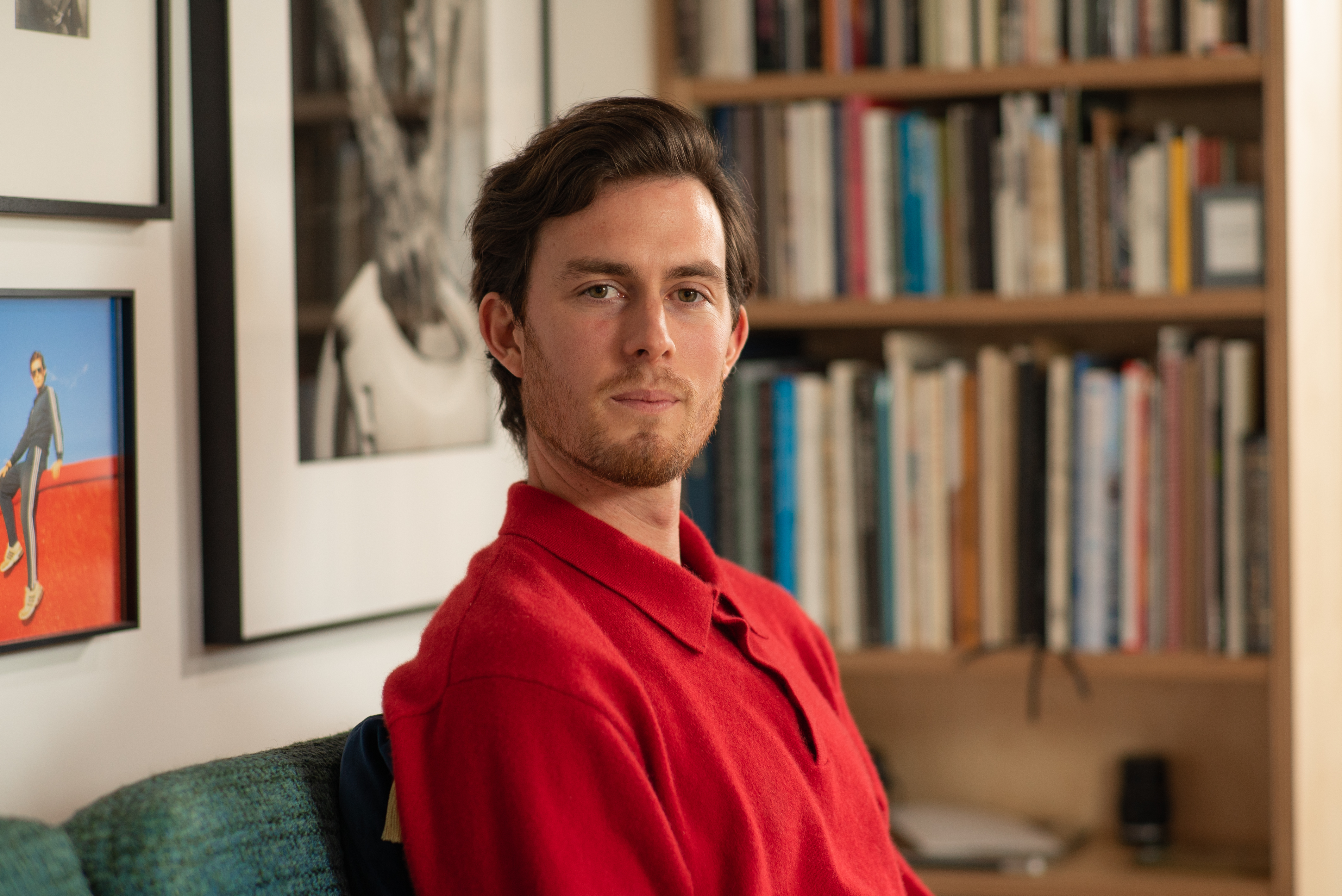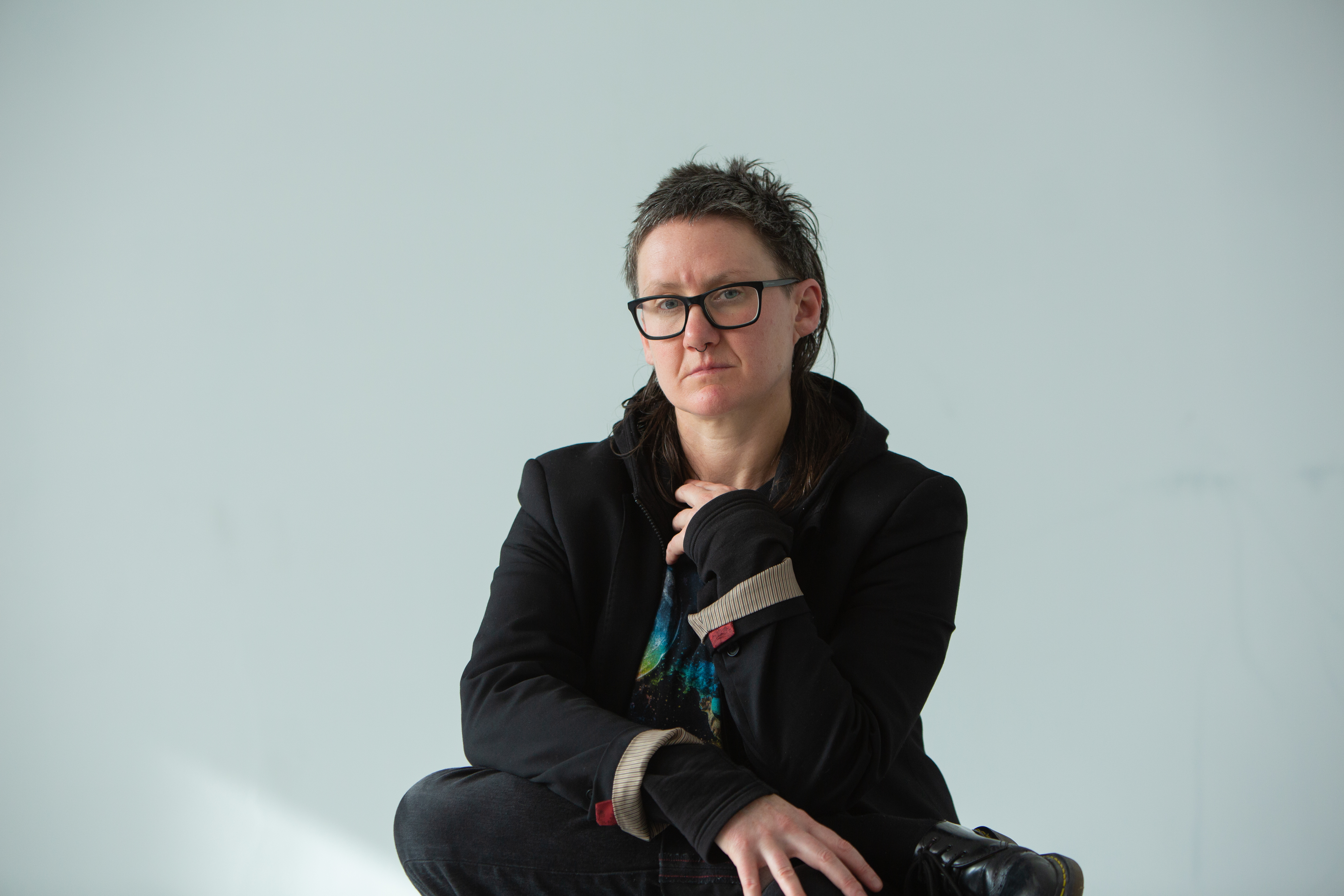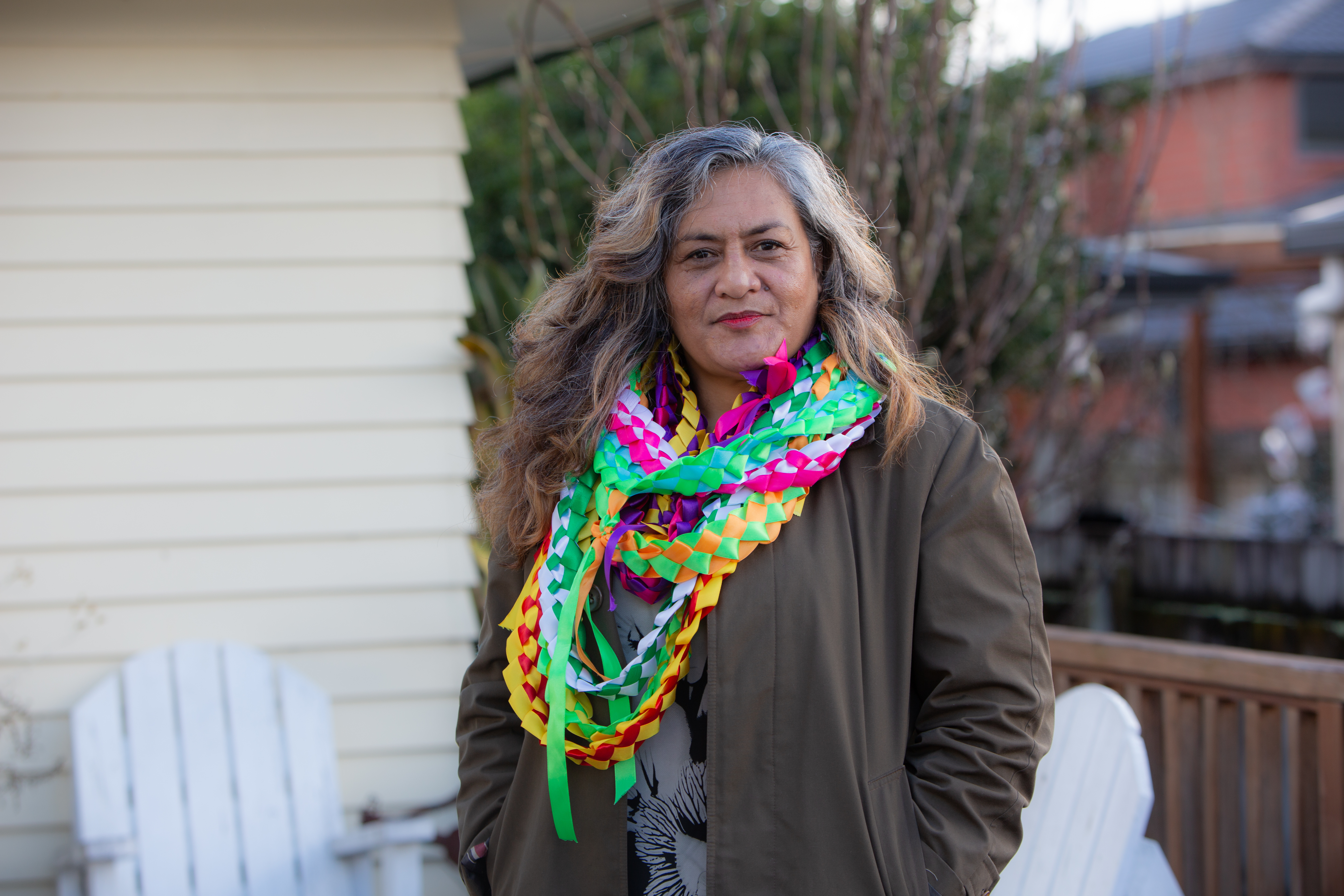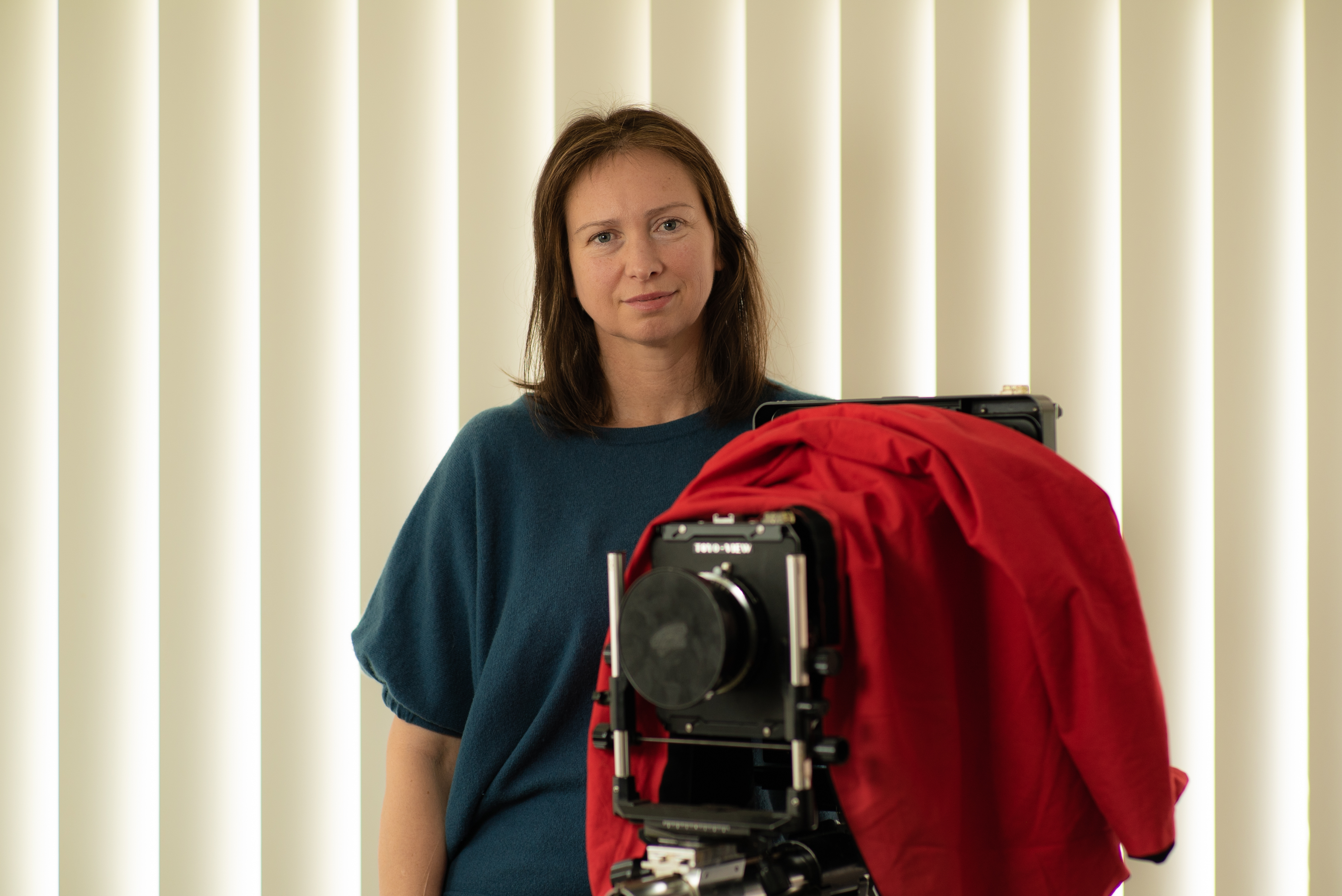We write
great emails.
If you’d like to stay in the loop with the arts and creativity in Aotearoa, get ‘em in your inbox.
If you’d like to join a movement of people backing the arts and creativity.

Meet your 2019 Arts Foundation Laureates
Arts Foundation Laureate Awards celebrate and empower artists with outstanding potential for future growth whose practice has an impact on New Zealand. Every year the Arts Foundation recognise ten exceptional artists with a $25,000 award. These are the 2019 Arts Foundation Laureates.
Laurence Fearnley
Arts Foundation Laureate receiving the award for literature

Laurence Fearnley, 2019 Arts Foundation Laureate receiving the award for literature
A novelist, short story and non-fiction writer who lives in Dunedin, Laurence’s work has a strong sense of place and the South Island landscape. Novels include The Hut Builder, Reach, Edwin and Matilda, and Room.
Laurence says: “When I was a child, I used to write stories a lot ... And I liked school projects that related to history, English and all those sorts of things. But I think the big impact on terms of becoming a writer came about when I was working as a curator at the Dowse Art Museum in Lower Hutt. I used to go and visit people who were working full time as artists. And even though they weren't making much money, they all seemed to have a real sense of purpose and real meaning in their life, because they were committed to their art. I realised that I didn’t want to be the person writing about artists, I wanted to be the artist.”
Laurence is working on a series of novels on the five senses. Her first novel in this series is on scent and she wonders if “New Zealand has a scent identity of its own? And what would it mean to different people? Would it be the smell of the sea? Or native bush? Or could it be the smell of hay or freshly mowed lawns, or perhaps flax and cabbage trees?” She plans to use her Laureate Award to help cover travel and research for her new novels.
Pietra Brettkelly
Arts Foundation Laureate receiving the Dame Gaylene Preston Award for Documentary Filmmakers

Pietra Brettkelly, 2019 Arts Foundation Laureate receiving the Dame Gaylene Preston Award for Documentary Film Makers
Pietra Brettkelly is a documentary filmmaker who identifies insatiable curiousity as the defining feature of her work. Her work has been featured in the Sundance, Berlin, Venice and Toronto film festivals. Her most recent documentary, Yellow is Forbidden is based on Chinese designer Guo Pei’s journey to become part of the world of Haute Couture in Paris.
Pietra attributes her creative drive to her parents: “the big thing that my parents gave to me, was this view to wonder at the world, wonder about everybody, and how we all fit together … And to look beyond myself and to wander and wonder.” When she looks back at her career, the catalyst for her work has been her tenacious commitment to gaining access to her subjects, saying: “If I can get in front of anybody, I can convince them.”
She’s drawn to themes of isolation, the complexity of life, and celebrating the extreme. Describing her work as a calling: “I very rarely get paid …It is bloody hard. It's really hard. And you know, I feel like I rip out my heart with each film. I hold it in my hand and offer it to investors, to supporters, to the first audience at my first screening, and it is the most exposing thing … So for an organisation, and for a group of my peers, to have said we want to acknowledge you makes me quite emotional. Because this work can be quite solitary.”
Solomon Mortimer
Arts Foundation Laureate receiving the Marti Friedlander Photographic Award

Solomon Mortimer, 2019 Arts Foundation Laureate receiving the Marti Friedlander Photographic Award
Solomon Mortimer is a photographer. He regularly exhibits both nationally and abroad and has prints in public collections at Christchurch City Art Gallery, Sir George Grey, James Wallace and Auckland University. His book works are held in significant library collections nationally and have toured in international exhibitions.
Asked to describe his work he says: “I really don't know what's going to make a good photograph. And so I have to take chances, and I enjoy taking chances. I enjoy it when I'm surprised, irritated or beguiled by an image ... A successful image for me so often has an unknown quality, that kind of irks you to-the-point where you just become so sort of enamoured with it.”
When he received the call telling him he was a Laureate he likens the feeling to discovering the work of an artist that blew him away.“ I remember the first time I saw Peter Black’s Moving Pictures and was just too freaked out that someone could make such excellent observations of humanity from a moving car! Or Marie Shannon’s domestic interiors that somehow contained what felt like a whole novel in three stitched together prints. The experience of viewing works like those, filled me with such enthusiasm for the medium that all I wanted to do was to go out and make my own pictures. Receiving the call about the Laureate Award gave me that same feeling.”
Kris Sowersby
Arts Foundation Laureate receiving the award for design and typography

Kris Sowersby, 2019 Arts Foundation Laureate receiving the award for design and typography
Since releasing his first retail typeface in 2005, typeface designer Kris Sowersby has received numerous awards and accolades and designed custom fonts for clients like The Financial Times, PayPal and National Geographic. His typefaces National and National 2 and his 2018 exhibition ‘there is no such thing as a New Zealand typeface’ explore the relationship between typeface and place and whether a typeface can have a regional accent.
Initially attracted to typography as the most elemental unit of graphic design he considers a typeface to be closer to “something that a builder would use to build a house or the ingredients a chef would use to make a meal. It doesn’t exist in isolation. But a lot of the talk around typefaces is as if they exist by themselves. It’s a bit like paint existing by itself, paint is pretty useless until it is used … typefaces are more like a material to be used by designers.” He goes on to say that typographers act in this “visible invisible space” because we’re “taught to read and recognise letters, and after a while you don’t recognise the shape of them because they’ve become functionally invisible.”
He plans to put his Laureate award towards a practical guide to typeface design, saying “I want to make it as simple and jargon-free as possible. I pretty much want to write it for me 15 years ago, the thing that I needed.”
Louise Potiki Bryant
Arts Foundation Laureate receiving the award for choreography and dance

Louise Potiki Bryant, the 2019 Arts Foundation Laureate receiving the award for choreography and dance.
Louise Potiki Bryant is a Ngāi Tahu choreographer, dancer, and video artist. A founding member of Atamira Dance Company for whom she has choreographed six works, she has also choreographed for Black Grace Dance Company, The New Zealand Dance Company and Ōrotokare, Art, Story, Motion.
She says: “When I was a young girl I would dance around in this old room in our house for hours. I was lucky that my Mum sent me to ballet and gymnastics. However it was when I was dancing in that room alone, making up my own movement, that I really felt the freedom of dancing.” There was a point where she thought she couldn’t be an artist, saying: “I studied Māori Studies and Law. I value this time because it really helped me to understand so many aspects of our history such as issues surrounding te Tiriti o Waitangi. At the same time, I was in a dance group and becoming more interested in choreography. One of my lecturers saw I was dancing all my assignments and told me I was in the wrong place.”
For Louise, performance is a time when she can express a deeper side of herself. “dance and visual art is often about expressing concepts and kaupapa in a way that cannot always be expressed with words. Dance is a time when I go into a space that is transformative, where I lose myself and become timeless in a space between, a liminal space between consciousness and subconsciousness.”
Ruth Paul
Arts Foundation Laureate receiving the Mallinson Rendel Illustrators Award

Ruth Paul, 2019 Arts Foundation Laureate receiving the Mallinson Rendel Illustrators Award
Ruth Paul is a Wellington-raised writer and illustrator of more than 18 books, including The King’s Bubbles, Stomp! I Am Jellyfish and the Little Hector series. Her books have been published in New Zealand, Australia, the UK, Canada, the US, China and Korea.
She began writing, as well as illustrating, to have control over the whole story arc, saying: “It's an alchemy ... You get to have more control over the various elements. You can create a more holistic work … With writing and illustrating, I can change a word when it's not working. I can change the illustrations when it's not working … telling a story better by doing both.” Having kids and understanding what it is to cuddle up and read a picture book to them was a pivotal moment of her career, as was being able to give up her part-time work to focus on her books.” Ruth loves the work of a book, “out there - in my head - there is this elusive perfect picture book that I'm going to make one day … So there's always a challenge.”
Art moves her away from everything she knows and puts her in touch with emotion: “Because in the busy-ness of life, I forget to be moved, and to be provoked by something another human-being has made – not because they had to but because they wanted to – is an experience of freedom for me.”
val smith
Arts Foundation Laureate receiving the award for performing arts

val smith, 2019 Arts Foundation Arts Foundation Laureate receiving the award for performing arts
val smith is a pākehā, queer artist, educator and initiator of projects based in Tāmaki Makaurau. Their work is transdisciplinary, with a focus on performance and writing. val’s performance work investigates gender, sexuality, perception and participation.
They say, “gender and sexuality are quite entangled for me … exploring that through my art practice has been a real place of joy. It’s a creative space that's allowed me to connect with other artists who are also working around gender and sexuality, providing me with a way to build community and feeling of belonging.” A forthcoming trip to Ireland is a chance to explore their roots, “it's really my first opportunity to connect with the land .. my bloodlines. So it feels really important … For a lot of queer people, there’s an experience of feeling like you don't belong, or you don't fit, or something like that, especially if there's a disconnect with your biological family … connecting with the land is a way to feel like you have a place to stand no matter who you are, or what you are.”
val says they tried ‘normal jobs’, but kept getting drawn back into art. “Now it almost feels like it would be disrespectful not to continue because I've had so many people support and encourage me. It doesn't feel like a duty, but it feels just so right for me now.”
Sima Urale
Arts Foundation Laureate receiving the Burr/Tatham Trust Award

Sim Urale, 2019 Arts Foundation Laureate receiving the Burr/Tatham Trust Award
Filmmaker Sima Urale is influenced by her Samoan heritage and her experience of living in urban New Zealand. Her films include O Tamaiti, Still Life, Coffee and Allah and Apron Strings.
She started her career as an actor, quickly realised she wanted to write and create her own work and credits her distinctive aesthetic to her start in theatre and love for art. She says “I'm really privileged to do what I do … I always feel thankful because I get to tell stories and express myself in the most public way … I have a say about society. If I'm angry about something, I can write about it and tell a story.”
Sima mentors other filmmakers, citing one of her most fulfilling experiences as teaching a Samoan entrepreneur. “A guy wanted to start doing commercials and had never done anything like that. So I showed him how … with a little camera and a group of village men. Every year I went back it got bigger, I upskilled them and showed them different techniques. He grew a really big company. It’s really fulfilling training the discipline to other people that don’t have the option of going to film school. You're making an impact.”
Her goal is to “make films until the day until the day I die. It doesn't matter if I had a big hit last year, you still need to get the next one off the ground … we're constantly learning until the day we die.”
Coco Solid
Arts Foundation Laureate receiving the award for mixed media

Coco Solid, 2019 Arts Foundation Laureate receiving the award for mixed media
Coco Solid aka Jessica Lee Hansell is a musician, writer and artist. Her work includes documentary Heaven’s Gate, TV series Ahikāroa, animated TV series Aroha Bridge, and her album Cokes.
She works across many disciplines saying: “I had to work out where I find myself thriving and inspiring others the most … the different realms where that sense of self was strongest and most potent. They happen to be in the creative medium and I try and work just on those.” She speaks about her determination to speak truth to power and says her kaupapa is to radicalise every context that she works in. “Whether that's deluded or optimistic or ambitious, I don't think about that … I come in with an intention and I see how far I can get.” Musically she’s adopted a DIY underground ethos outside industry structures, and cites the autonomy this has given her as high-risk high-reward. Recently she received her Masters in Creative Writing, and was named the 2018 recipient of the Fulbright-Creative New Zealand Pacific Writer’s Residency.
She sees her success as collective, a victory that belongs to everyone that has championed her on her journey. In a 2018 interview with the Guardian she said: “In my world you’re only as good as those you helped to amplify … Generally Polynesian artists understand our obligations and responsibilities to those coming after us ... Our cultures discourage individualistic legacies that western culture rewards: if you tried that you’d get shit-talked pretty fast.”
Yvonne Todd
Arts Foundation Laureate receiving the Theresa Gattung Award for Female Arts Practitioners

Yvonne Todd, 2019 Arts Foundation Laureate receiving the Theresa Gattung Award for Female Arts Practitioners
Photographer Yvonne Todd won the inaugural Walters Prize with a series of ten photographs made in her final year of study. She has exhibited nationally and internationally and her major solo shows include Creamy Psychology, Wall of Seahorsel, and Blood, in its Various Forms.
Yvonne makes art because she is compelled to. Although she’s a photographer she sees the photographic process as almost beside the point. “It’s just a means of documenting what I’m setting up in front of the camera … I know how to take a photo and as long as that side of things are competent it’s all about the idea behind it.”
Portraiture is a recurring theme in her work, “I think that people are intrinsically interesting, it feels like there are infinite methods of photographing someone. It’s not a subject I could ever tire of.” She’s always used costumes in her portraits, and the process of designing those costumes has recently become part of the work. “I like to take certain historical styles and make them contemporary … so they’re not just true to the era … I bring a biographical element to the work, things from my past. Scraps and fragments of memories appear in my work.”
She credits her busy family life (she has three children, aged three and under) with evolving her practice. “I feel that the work is far more decisive. I attribute it to the fact that I don’t have time. I don’t second guess myself now.”